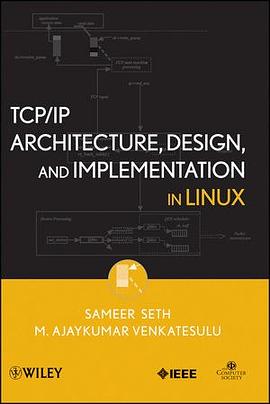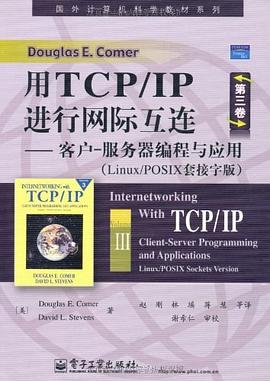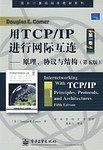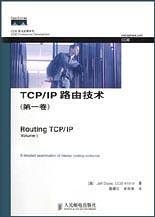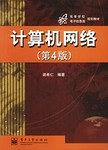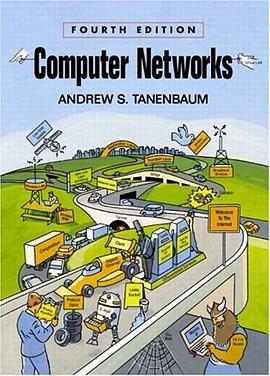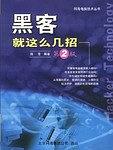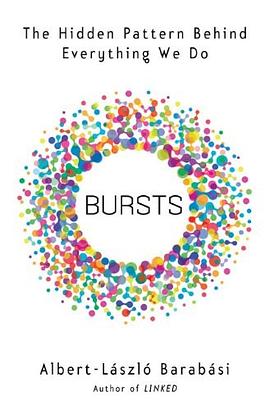

具体描述
Can we scientifically predict our future? Scientists and pseudoscientists have been pursuing this mystery for hundreds and perhaps thousands of years. But now, amazing new research is revealing that patterns in human behavior, previously thought to be purely random, follow predictable laws.
Albert-László Barabási, already the world's preeminent researcher on the science of networks, describes his work on this profound mystery in Bursts , a stunningly original investigation into human behavior. His approach relies on the way our lives have become digital. Mobile phones, the Internet, and e-mail have made human activities more accessible to quantitative analysis, turning our society into a huge research laboratory. All those electronic trails of time- stamped texts, voice mails, and searches add up to a previously unavailable massive data set that tracks our movements, our decisions, our lives. Analysis of these trails is offering deep insights into the rhythm of how we do everything. His finding? We work and fight and play in short flourishes of activity followed by next to nothing. Our daily pattern isn't random, it's "bursty." Bursts uncovers an astonishing deep order in our actions that makes us far more predictable than we like to think.
Illustrating this revolutionary science, Barabási artfully weaves together the story of a sixteenth-century burst of human activity-a bloody medieval crusade launched in his homeland, Transylvania-with the modern tale of a contemporary artist hunted by the FBI through our post-9/11 surveillance society. These narratives illustrate how predicting human behavior has long been the obsession, sometimes the duty, of those in power. Barabási's wide range of examples from seemingly unrelated areas includes how dollar bills move around the United States, the pattern everyone follows in writing e-mail, the spread of epidemics, and even the flight patterns of albatross. In all these phenomena a virtually identical bursty pattern emerges, a reflection of the universality of human behavior.
Bursts reveals where individual spontaneity ends and predictability in human behavior begins. The way you think about your own potential to do something truly extraordinary will never be the same.
作者简介
艾伯特-拉斯洛•巴拉巴西(Albert-Laszlo Barabasi)
全球复杂网络研究权威,无尺度网络的创立者。美国物理学会院士,匈牙利科学院院士,欧洲科学院会员,美国东北大学教授,网络科学研究中心的创始人、主任,同时任职于哈佛大学媒体学院医学系,并担任丹那-法 伯癌症研究所癌症系统生物学中心的研究员。
Barabasi提出无尺度网络模型,2006年因此荣获了匈牙利计算机学会颁发的冯•诺依曼金质奖章,是建立基于网络共性的统一科学理论的先行者,是复杂网络界引述最多的科学家。
世界著名科技杂志《popular science》杂志称赞 Barabasi“他可以控制世界”。
目录信息
读后感
8月25号湛庐文化在3W咖啡举办了#大数据时代预见未来的新思维#《爆发》读书会,现场活动很成功。我问了一个问题。发现经观已经将录音整理了出来,我又把提问理了一遍。 《爆发》提到人的行为93%都是可以预测的。不过推动个人转向及历史急转的往往就是那不可预测的7%。 提问:基...
评分1. 爆发的出现,往往是从无序变成有序的临界点,一旦系统被迫发生相变,一切随时改变,随即出现幂律(爆发)。节点也由无规则分布到社会化分布。 2. 无尺度网络有的两个特征是增长和优先情结,这会造就马太效应,富者越富;而合理利用适用性,是后来者打破这个法则的关键。 3...
评分人类动力学是一个迷人的研究领域,其中孕育了一系列有意义的研究。《爆发:人类90%的行为是可以预测的》一书正是其中一本重要著作。 本书作者巴拉巴西是复杂网络研究的重要领军人物,1999年之后先后在《自然》、《科学》杂志上发表重要论文,指出诸如社会网络、神经网络、交通...
评分93%! 这本书的作者艾伯特-拉斯洛·巴拉巴西要告诉我们的一个结论就是:人类行为93%是可以被预测的,只要我们有足够多对个人行为模式的数据采集,在现在这个数字化时代,你又有什么行为模式没有留下数字化痕迹呢? 巴拉巴西用了一本书絮絮叨叨讲了好几个故事,还把一本书写成...
评分93%! 这本书的作者艾伯特-拉斯洛·巴拉巴西要告诉我们的一个结论就是:人类行为93%是可以被预测的,只要我们有足够多对个人行为模式的数据采集,在现在这个数字化时代,你又有什么行为模式没有留下数字化痕迹呢? 巴拉巴西用了一本书絮絮叨叨讲了好几个故事,还把一本书写成...
用户评价
哈桑演讲挺有意思~~但是这本书写的一般,不如linked
评分无论如何都要读一遍
评分so so.
评分社交方式的技术革命带来了人类行为的量化分析。值得一提的是,Barabasi在science发表的论文那篇论文的引用率都到12000+了。。
评分so so.
相关图书
本站所有内容均为互联网搜索引擎提供的公开搜索信息,本站不存储任何数据与内容,任何内容与数据均与本站无关,如有需要请联系相关搜索引擎包括但不限于百度,google,bing,sogou 等
© 2025 book.wenda123.org All Rights Reserved. 图书目录大全 版权所有





